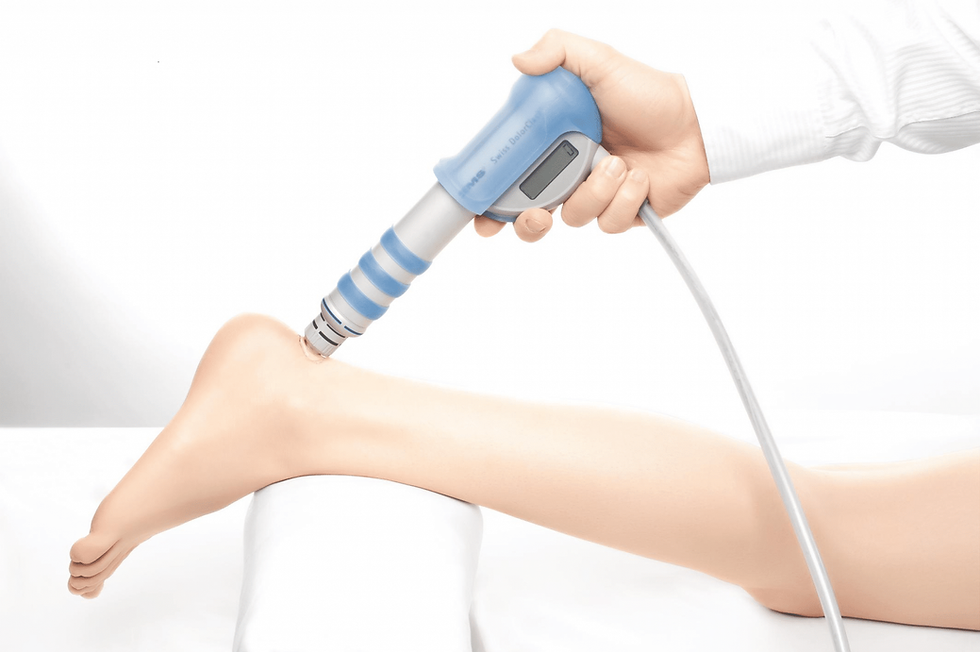Overview of Shockwave Therapy
- optimaphysioc
- Sep 13
- 2 min read

Extracorporeal Shockwave Therapy (ESWT) is a non-invasive treatment method that uses acoustic waves to promote healing in various musculoskeletal conditions. It involves the application of high-energy shockwaves to targeted areas of the body, primarily to alleviate pain and stimulate tissue repair. This may serve as a second-line treatment option for patients who do not respond to physiotherapy or other conservative approaches.
Mechanism of Action
The shockwaves created during the therapy can increase blood flow, stimulate cellular repair processes, and promote the regeneration of tissues. This can lead to the reduction of pain and inflammation in conditions like tendonitis, plantar fasciitis, and calcific shoulder, among others.
Clinical Applications
ESWT is commonly used for treating:
Tendon injuries (e.g. Achilles tendinopathy, tennis elbow)
Plantar fasciitis
Calcific shoulder
Patellar tendinopathy
Musculoskeletal pain syndromes
Trochanteric bursitis (Lateral hip pain
Procedure
The therapy typically involves:
Assessment: A thorough evaluation by a healthcare provider to determine suitability.
Preparation: The treatment area is usually exposed, and a gel is applied to facilitate the transmission of shockwaves.
Application: A handheld device delivers shockwaves to the affected area. The procedure usually lasts 15 to 30 minutes.
Post-treatment: Patients may experience mild discomfort, but there is generally minimal downtime.
Shock-wave therapy is generally administered at weekly intervals. Each session lasts approximately 20 minutes, and patients typically require three sessions, though up to five may be needed for more persistent conditions.
Efficacy and Safety
Studies have shown varying degrees of effectiveness, with many patients reporting significant pain relief and improved function. ESWT is considered safe, with few reported side effects, such as transient pain or swelling at the treatment site.
Conclusion
ESWT represents a promising option for patients suffering from chronic pain related to musculoskeletal conditions, offering a non-surgical and drug-free alternative for managing pain and promoting healing.
If you aim to improve your mobility, productivity, and experience pain-free movement, we are dedicated to supporting your goals. For comprehensive information about our services, please visit our website. If you have any questions, feel free to reach out to us via email or through our contact page for further assistance.



Comments